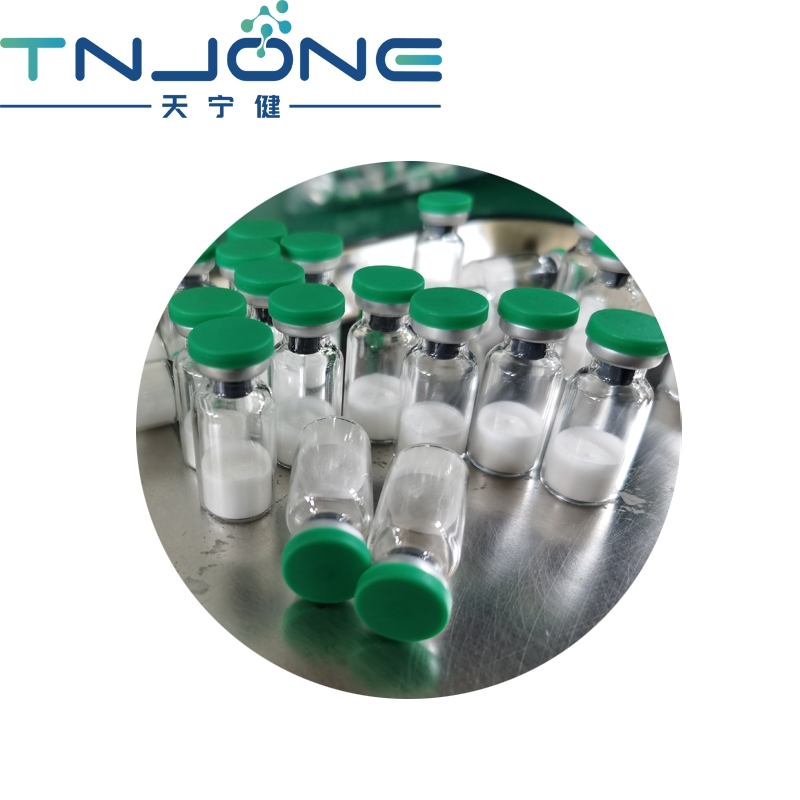-
Categories
-
Pharmaceutical Intermediates
-
Active Pharmaceutical Ingredients
-
Food Additives
- Industrial Coatings
- Agrochemicals
- Dyes and Pigments
- Surfactant
- Flavors and Fragrances
- Chemical Reagents
- Catalyst and Auxiliary
- Natural Products
- Inorganic Chemistry
-
Organic Chemistry
-
Biochemical Engineering
- Analytical Chemistry
-
Cosmetic Ingredient
- Water Treatment Chemical
-
Pharmaceutical Intermediates
Promotion
ECHEMI Mall
Wholesale
Weekly Price
Exhibition
News
-
Trade Service
Backgroundglioblastoma (GBM) is a common malignant brain tumor, accounting for 45% of central nervous system malignancies; The GBM prognosis is poorNancy Ann Oberheim Bush of the Neurosurgery Group at the University of California, San Francisco, USA, reviews the current diagnosis and treatment of glioblastoma, highlighting advances in surgery, imaging, molecular diagnostic and translational research, and clinical trials of immunotherapy and individualized therapies, published in the November 2019 issue of World Of2resultscurrent standard treatment for GBM, including the most safe surgical removal of the tumor, followed by radiotherapy and synchrotron penazole (TMZ) chemotherapy, followed by TMZ treatment for 6-12 monthsWith this treatment model, the median overall lifetime (OS) in GBM patients was 12-18 monthsThe prognosis has not improved significantly in the past decadegenome-wide study identified 25 gene sites that affect the onset of gliomaIn the study of the whole transcriptome of GBM and non-GBM, 23 genes associated with GBM were identifiedTypical features of primary GBM are telomerase reverse transcriptase (TERT) promoter, phosphatase and stoic inhomoid tumor inhibition gene mutations, cell cycle protein-dependent kinase inhibitors (cyclin-en-kinase) 2A/B mutations, gene amplification of primary cancer gene epidermal growth factor receptor (EGFR) gene amplification, and chromosome 7 (platelet-containing setoid-containing growth factor a) increase and 10 thachromosomes and palate-contained Secondary GBM is characterized by mutations in isocitric dehydrogenase 1 and 2 (IDH1/2), tumor protein P53 and thalassemia/mental retardation syndrome X-linked (a thalassemia/mental retardation syndrome)One of the most important differences between primary and secondary GBM is the IDH1/2 mutation, which suggests a better prognosisMethylation of MGMT promoters can extend the survival of patients treated with radiotherapy and TMZimaging examination is very important in the early diagnosis and treatment of GBMThe standard imaging check is MRI flat sweep and enhanced imagingMRI Dispersion Weighted Imaging (DWI), which uses the diffusion rate of water in the tissue to distinguish tissue density to determine the presence of tumorsCompared with normal brain tissue, the tumor region was associated with lower epigenetic diffusion coefficient value (ADC)Dynamic contrast enhancement tests the speed at which contrast agents spread from blood vessels to tissues as markers of the distribution of blood vessels in tumors Comparing the dynamic magnetization rate of perfusion with the time series image of THE MRI can help to determine the factors associated with the tumor and the effects associated with treatment, and the parameters associated with such perfusion, such as relative brain blood volume, relative brain blood flow and average transfer time, can be used as diagnostic indicators of tumor and preoperative prediction indicators Monitoring tumor vascular function plays a crucial role in THE evaluation of antiangiogenic drugs and immunotherapy results by MRI Magnetic resonance spectrometry (MRS) uses cell metabolites levels to determine tumor activity, revealing tumor activity areas and therapeutic effects In addition, metabolic and functional imaging techniques can help determine the presence of active tumors associated with the effectiveness of treatment The most commonly used tracers are O-2-
18 fluoroethyl-tyrosine (FET) and 3,4-dihydroxy-6-
18 fluorine-L-phenylalanine, and tumor cells have a large difference between their intake of the normal brain Static FET-PET imaging is quite reliable for distinguishing tumors from normal brain tissue, and FETs can also be used for dynamic imaging, which helps to distinguish tumors from tissue radiotherapy responses with an accuracy of up to 90%, and can also be used to explain changes in imaging performance after immunotherapy conclusions clinical trials over the past 20 years have shown that improving tumor resection (yaly of resection, EOR) can extend the life span of GBM patients Compared to a complete excision or biopsy, total excision (gross total resection, GTR) tumors on MRI-T1 weighted enhanced imaging can improve the overall survival rate and progression less progressive survival (PFS) in newly diagnosed GBM patients However, GTR can only extend OS in patients with the IDH1/2 mutation and 1p/19q gene co-missing Preoperative imaging examination is very important to the safety and effectiveness of GBM surgical resection Diffuse exfoliation fibrous fiber tracking is an MRI imaging that depicts the white mass beam under the cortex; Functional imaging includes functional magnetic resonance imaging (fMRI), brain magnetic maps (MEG), and navigational transcranial magnetic stimulation It is more difficult to apply fMRI in brain tumor excision because GBM causes vascular changes leading to neurovascular coupling separation and false negatives In clinical trials, the use of fluorescent marker 5-aminoacetyl acetaminophenic acid under blue light can improve EOR and PFS in patients with malignant gliomas Through wakefulness or sleep anesthesia, the positioning of the brain movement area in the operation can improve EOR, especially the protection of the linguistic cortex, shorten the hospital stay and improve the functional prognosis surgical lycs to the GBM, sub-radiation plus combined TMZ chemotherapy can be used For patients over 65 years of age, low-segment radiotherapy and chemotherapy improved median OS (9.3 months: 7.6 months; P 0.001) compared to simple low-segment radiotherapy, and had good tolerance Therefore, for elderly patients, consideration should be given to the use of this programme The application of tamoxide is the standard chemotherapy regimen for GBM Giving assistive TMZ while radiotherapy increased the median OS (14.6 months: 12.1 months) and increased its 2-year survival rate from 10.4 percent to 26.1 percent compared to pure radiotherapy In patients with MGMT promoter methylation, the prognosis was better within 2 years, with a median OS rate of 46% Alternative TMZ administration treatment can achieve similar results, but the alternative drug is more toxic Tumor electric field therapy (TTF) patients, which destroys the stability of the microtubula sin of GBM cells, leading to filament division interruption and cell death During TMZ treatment, daily TTF treatment for newly diagnosed GBM patients with a significant improvement in OS (P 0.001) during TMZ treatment compared to pure TMZ therapy, with a five-year survival rate increased from 5% to 13% (P 0.004) The main side effect of TTF is skin irritation, and patients must wear the TTF device for an average of 18 hours a day, which has a significant psychological impact There is no standard treatment for recurrent GBM Treatment options, including tumor surgical removal, re-radiation, restart ingression TMZ, or alternative therapy, should all be considered Bevalmono is a monoclonal antibody of human-induced antivascular endothelial growth factor, which can improve tumor remission and prolong PFS time systemic chemotherapy has many limitations Because of the blood-brain barrier, the drug does not reach sufficient concentrations in the central nervous system Traditional brain room or tumor residual cavity built into the Ommaya receptacle to give medicine, the effect on the substantive brain tumor is limited Implantable release polymer systems, such as BCNU wafers containing nitro-carmastin, can locally release drugs into tumor residuals A promising clinically promising technique is also being tested, i.e through a catheter-to-flow enhanced delivery system (CED), using positive pressure infusions to inject a solution containing chemotherapy drugs directly into the brain, and bypassing the blood-brain barrier to distribute the drug directly to the tumor area, while adjusting the pressure and flow At the same time, the distribution of drugs is observed in real time using MRI in surgery Another strategy for overcoming the blood-brain barrier is intra-tumor gene therapy, and clinical trials are under way to transfer genes to tumor cells using retrovirus replication vectors in addition to improving drug delivery, many studies are looking for new targeted drugs and personalized medical methods Targeted treatments include DNA repair, tumor growth, apoptosis, invasive and angiogenesis, and overcoming TMZ resistance Polydylphosphate nucleolyser polymerase 1 (PARP1) is an important DNA repair enzyme that is raised in GBM stem cells and is associated with tumor recurrence; Personalized treatments, based on bioinformatics analyzing each patient's tumor, including cancer genome, proteomics, and transcription group data, develop appropriate treatment measures for each patient based on specific tumor targets, drug sensitivity, and immunosuppressive factors, including a combination of multiple drugs Immunotherapy is the use of cells, vaccines to regulate the immune system to treat GBM Checkpoint inhibitors have been studied in patients with recurrence and newly diagnosed GBM DCVax-L is a dystorate cell protein extracted from the patient's own GBM to stimulate the anti-tumor immune response In addition to prolonging a patient's life, GBM treatment has another goal to improve the quality of life (QOL) Quality of life is the overall well-being of patients, including functional or physical condition, as well as emotional and social well-being Symptoms associated with tumors and chemotherapy commonly associated with GBM patients, such as headaches, seizures, personality changes, cognitive impairment, and common neurological defects in motor function, language, and vision, can affect quality of life Every effort should be made to provide palliative care and care at an early stage of the course Caregivers are critical to maintaining the quality of life of GBM patients.







